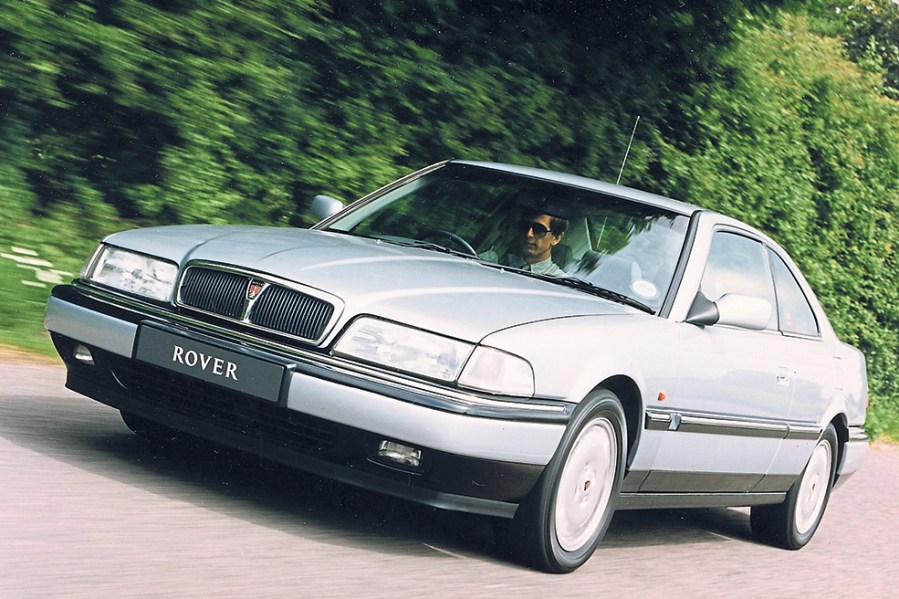Three decades ago, the UK was emerging from recession and these new model launches of 1992 were reason for optimism in terms of car sales. Today, each is a real modern classic
Words: Paul Guinness
By any standards, 1992 was an eventful year here in the UK. The Queen celebrated her Ruby Jubilee, John Major’s Conservatives won an outright majority in a general election (despite opinion polls suggesting a narrow Labour win), and Manchester suffered a devastating bomb attack by the IRA. And of course, there was no shortage of activity on the motoring front, with a number of important new-model launches taking place during this year.
Among the major announcements was Toyota’s unveiling of its new Carina E, which would go into production at the company’s newly established UK plant in Burnaston, Derbyshire, by the end of the year. And just as important was the debut of Nissan’s K11-generation Micra, which would become the second Nissan model to be built at its Sunderland factory. Each newcomer would go on to be a major success, with a high proportion of export sales throughout Europe.
Of more importance to the general new-car buyer of 1992, however, was the government’s announcement that Special Car Tax (first introduced in 1973, adding 10 per cent to the ex-factory price of every model sold) was to disappear. It had already been reduced to five per cent in the Budget of March 1992, but would be dropped altogether by the end of the year, giving car manufacturers a much-needed boost after what had been a major recession. So, let’s take a look at some of the biggest new-model launches of 1992.

Rover 800 Coupe
The first-generation Rover 800 series of 1986 had been responsible for the marque’s return to the American market, albeit using the newly invented Sterling brand name to differentiate itself from previous Rover sales disasters over there. And so it was inevitable that Rover would want to build momentum with the launch of the second-generation 800 range, planned for 1991.
To give the new line-up even more American appeal, Rover designers started work on a two-door coupe version, complementing the anticipated four-door saloons and five-door hatches. It was a plan that made sense, as executive-style two-door coupes were big business in the USA. But then disaster struck: sales of the existing (Sterling) 800 were proving so disastrous that Rover had little alternative but to pull the plug on American sales altogether by 1991, the same year that the second-generation line-up was launched in Britain.
Rover then had the choice of either scrapping the 800 Coupe or putting it into limited production for European consumption – and happily it chose the latter route, launching the handsome two-door as a bespoke machine, claiming that around 80 per cent of the car was finished by hand. This meant, however, that the 800 Coupe was mightily expensive, costing over £30,000 – at which level it was competing against Jaguars and upmarket Mercedes coupes.
The motoring press couldn’t get over this, only praising the 800 Coupe once Rover saw sense and began reducing prices, as well as expanding the range via a 200bhp, 2.0-litre Turbo version to complement the existing 2.7 V6. Nevertheless, the 800 Coupe remained a rare sight when new, appealing to far fewer buyers than its four- and five-door siblings.

Alfa Romeo 155
When Alfa Romeo’s new front-wheel-drive 155 went on sale in early 1992, it was the car that enthusiasts hoped would finally enable the sporting Italian brand to take on the BMW 3 Series – and perhaps even beat it. But as had happened so many times before, this particular Alfa was too full of compromise to excel at such an ambitious task.
Still, the 155 was an impressive car in many ways, offering a terrific choice of classic engines, a wonderfully entertaining Italian-style driving experience, decent handling and the kind of charisma that German designers seemed unable to recreate. It was an executive car for the individual, gaining extra ‘street cred’ for its success in Touring Car racing, which generated headlines throughout Europe when the 155 won both the German DTM and the UK’s BTCC.
Entry-level British-spec versions came with the 1.8-litre Twin Spark engine, although our favourite has to be the 155 V6, which featured the power (166bhp), performance (131mph) and aural delights that any six-cylinder Alfa Romeo is renowned for. Most interesting of all the 155s, however, was the Q4, with 2.0-litre twin-cam power and all-wheel-drive setup from the Lancia Delta Integrale. With fewer than 3000 built in total (and only a handful of LHDs sold in the UK), this was always destined to be a very rare sight on British roads.
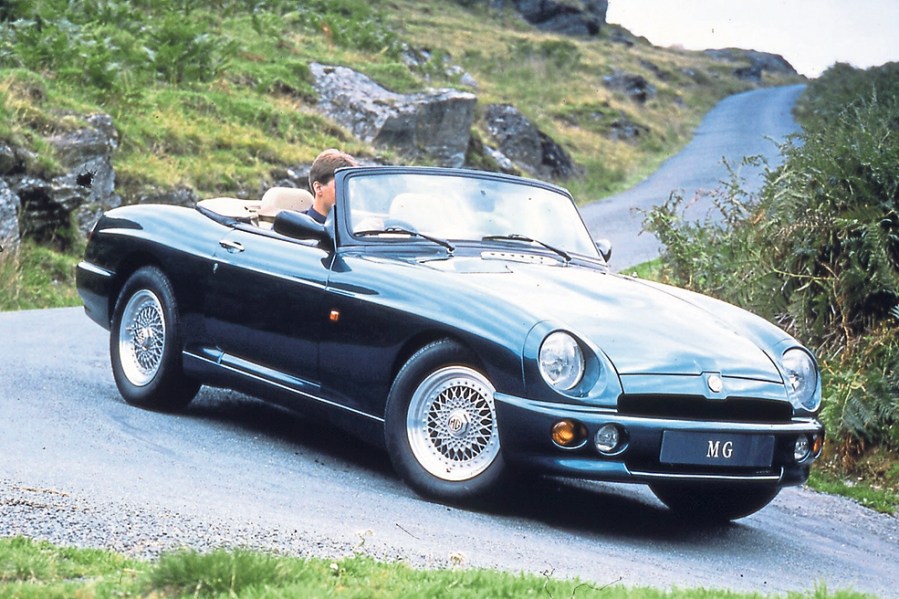
MG RV8
The resurrection of MG as a builder of genuine sports cars occurred in 1992, when the V8-engined RV8 took a bow. Essentially an updated and upgraded MGB, the RV8 featured a more muscular looking bodyshell, a 3.9-litre (190bhp) powerplant and uprated – but not drastically updated – steering, suspension and brakes. This was very much an ‘old school’ model intended only for limited production, which explains why the final RV8 was hand-finished as early as 1995 after a run of just 2000 units.
A big proportion of that total was exported to Japan, where fans of traditional British sports cars were eager to snap up the RV8 while stocks lasted. But with such a short production run, surely the car’s creator – Rover Group – didn’t make any money out of it?
Well, probably not. But what the RV8 did was bring attention back to the MG marque before the arrival of the all-important MGF in the mid-1990s. The debut of the hand-built RV8 meant that, at long last, a ‘proper’ MG sports car could once again be bought brand new – and buyers were guaranteed an entertaining experience. This was a genuinely quick machine, with a top speed of 136mph and the 0-60mph dash in a mere 6.9 seconds – although with old-fashioned leaf springs bringing up the rear, the car’s handling could be tricky at the limit.
The RV8 should be remembered for bringing the traditional MG sports car back to life – and for giving the classic MGB one final outing.
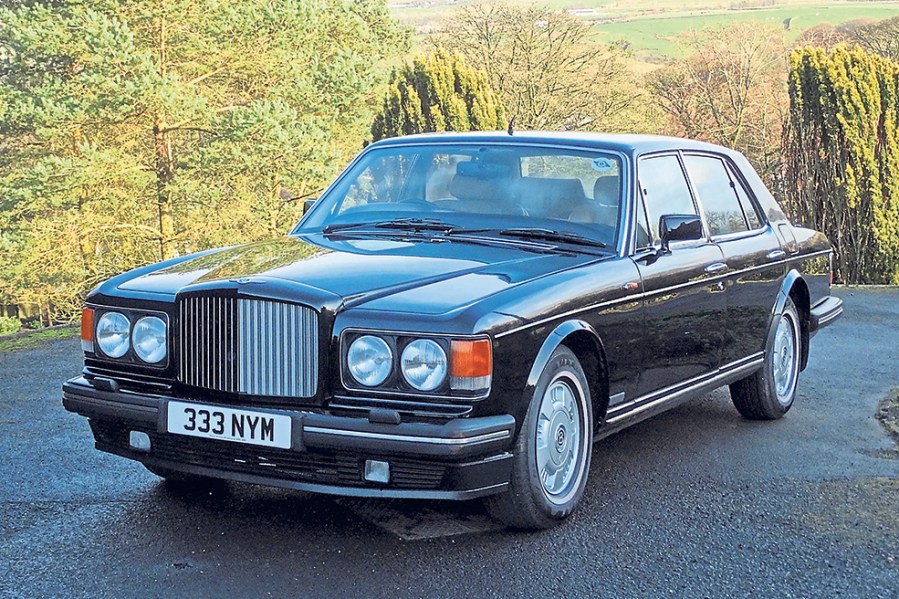
Bentley Brooklands
The Bentley Brooklands was unveiled in October 1992, effectively replacing the two non-turbocharged models in the Bentley line-up. The entry-level Bentley Eight cost £84,867 by ’92, while the Mulsanne S came in at £92,246. In their place came the Brooklands at just under £90,000, bridging the gap between its predecessors and simplifying the Bentley line-up via a single trim level instead of two.
Like the Mulsanne before it, the Bentley Brooklands featured a name strongly linked with the marque’s motor racing successes, with the official motor show car’s Brooklands Green paintwork adding to this homage to history. A new front air dam (incorporating a pair of discreet fog lamps) and an all-new alloy wheel design were introduced, while the old-style chrome moulding that previously ran along the centre line of the bonnet was deleted. The interior also carried a number of subtle improvements, with pleated leather door trim being a neat touch, as was the leather-stitched gear selector and the option of Turbo R seats complete with fold-down picnic tables in the rear.
Despite the fact that the SZ family of Rolls-Royce and Bentley models wasn’t exactly box-fresh by 1992, having been around for a full twelve years, the Brooklands was warmly received. It remained in production for almost six years (finally replaced by the long-awaited new Arnage in 1998) and managed to attract 1719 buyers globally during that time – with 190 of them opting for the significantly more expensive long-wheelbase derivative.
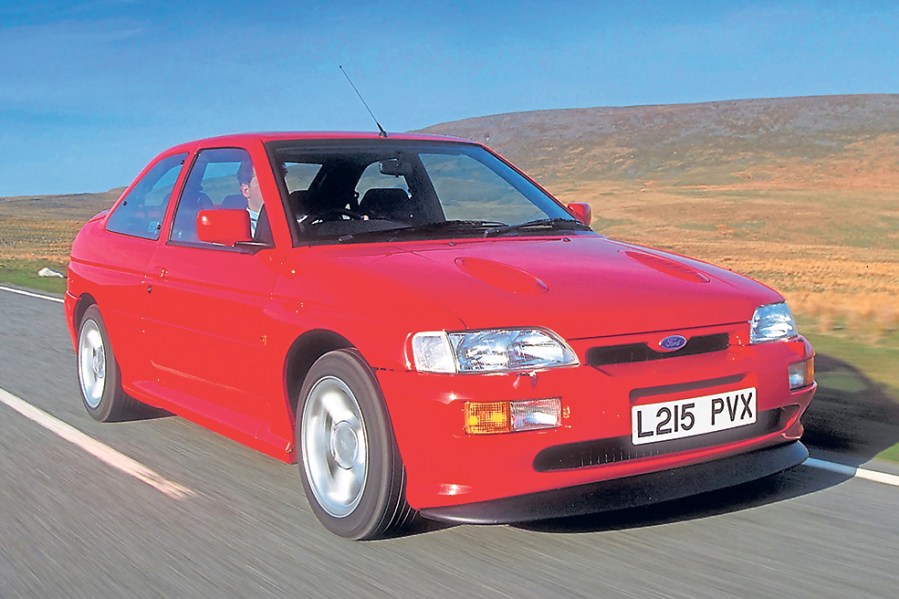
Ford Escort RS Cosworth
After the motorsport success of the Sierra RS Cosworth, the final Sapphire version of which was due to cease production by the end of 1992, Ford went in a different direction for its next contender. With a corporate eye on the ’93 World Rally Championship, the company developed the Escort RS Cosworth – a bespoke machine based around the platform and mechanicals of the Sierra Cosworth but fitted with Mk5 Escort body panels.
Created under the guidance of Ford’s SVO department, the styling was finalised during 1989 – a year before the standard Escort was launched – by MGA Developments of Coventry. Changes were also made to the car’s engine management system, and a new Garrett turbocharger was fitted. Permanent four-wheel drive with a 34/66 per cent front/rear split came via an uprated five-speed gearbox from the Sierra Cosworth.
The Escort RS Cosworth never did win any of the drivers’ or constructors’ championship titles, but still proved itself an impressive performer in the Group A era, with 10 WRC rally wins between 1993 and ’97. The Escort RS Cosworth was eventually retired from the Works rally team after the final round of 1998’s WRC season, with the following year seeing its Focus-based successor taking over.
Honda CRX Mk3
After two generations of Civic-based CRX fastback coupes, Honda went for a rather more radical style with its 1992-on Mk3 range, which featured a low-slung three-box profile with distinctive rear buttresses. And it also brought with it a removable aluminium roof that was electrically operated on the most expensive versions. For the first time, CRX buyers could now experience open-air fun.
The latest front-wheel-drive CRX was as entertaining as its forebears, with the flagship model boasting Honda’s 1595cc twin-cam V-TEC engine – pumping out 158bhp in this guise to provide a 132mph top speed. Strangely, the third-generation CRX failed to capture the imagination of British enthusiasts in quite the same way as its predecessors, perhaps because it was less practical thanks to its tight two-seater cabin and tiny boot. But on today’s modern classic market, it’s rather more sought after – and makes an interesting alternative to Toyota’s more successful (and therefore less exclusive) MR2.
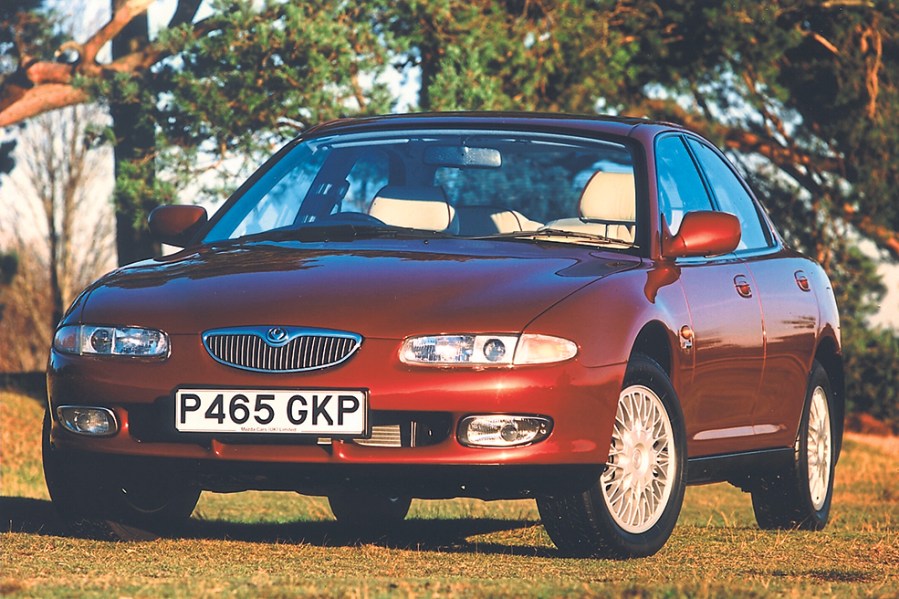
Mazda Xedos 6
As Japanese manufacturers pushed their more upmarket offerings in an attempt to beat the Germans at their own game, Mazda decided to have a bash at the compact-executive sector that for years had been dominated by models like the BMW 3 Series. And so along came the front-wheel drive Xedos 6 in 1992, a model that promised so much and initially attracted plenty of praise from Britain’s motoring press.
In the same way that Toyota had Lexus as its prestige division, Mazda saw potential for the Eunos brand (already established via the Eunos Roadster, the Japanese-spec version of the Mazda MX-5), hence the Xedos 6 being badged as the Eunos 500 in Japan and Australia. In Europe, however, it would be sold as a Mazda, hitting the market in ’92 and remaining on sale for seven years – during which time just 72,000 examples managed to find European buyers.
It was a great shame that a car as rewarding to drive as the Xedos 6 should be such a rare sight. Launched in 2.0-litre V6 guise (with a 1.6-litre four-cylinder arriving later), the Xedos 6 was a high-revving gem with 144bhp at its disposal. Not only did it offer superb performance, it came with one of the best engine soundtracks of its generation.
Throw into the mix the Xedos 6’s sensationally sleek styling (we’d argue it’s one of the best looking saloons of the ’90s) and excellent build quality, and you have a compact exec that was genuinely desirable to those few buyers who craved something less predictable than a German-built saloon with a posh badge.
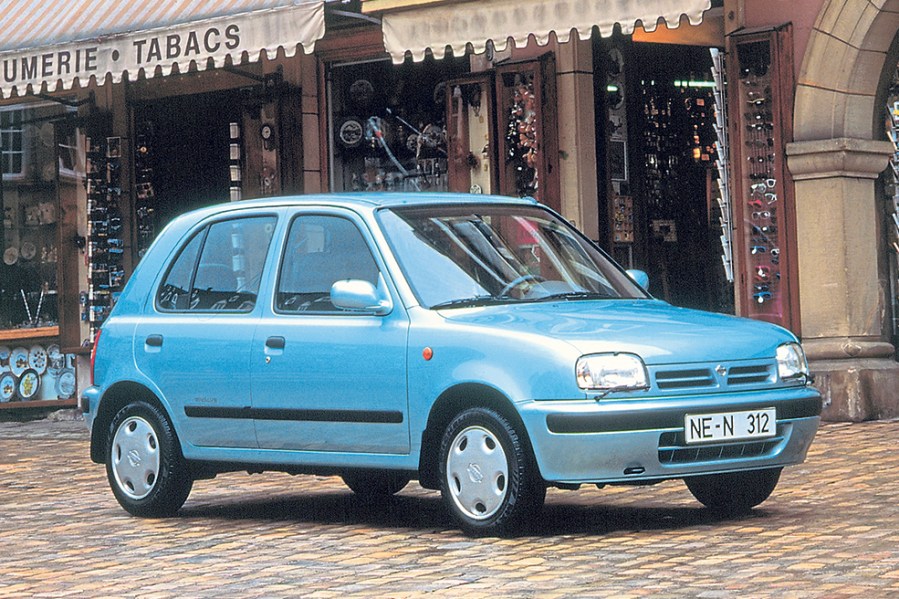
Nissan Micra (K11)
Nissan’s ageing first-generation Micra was finally phased out in 1992, replaced by another supermini bearing the same name. In reality, however, the latest Micra – known internally as the K11 generation – was a huge leap forward from its rather dated predecessor. For starters, its styling was bang on trend, with curvaceous good looks that made many of its older rivals suddenly seem behind the times. But the biggest advance could be found under the new Micra’s bonnet.
This car was new from the ground up, with fuel-injected 1.0- and 1.3-litre powerplants that were clean-sheet in their design, featuring 16-valve technology and impressive outputs of 54 and 74bhp respectively. The engines were silky-smooth in terms of power delivery, ensuring the Micra was one of the most refined superminis of the early ’90s. And even the 1.0-litre version felt surprisingly quick, aided by the kind of agility that made for a genuinely fun experience on a winding B-road. Where the old Micra had been anything but entertaining, the newcomer could surprise even the most cynical of drivers.
So good was the K11 Micra, it took top honours in the 1993 European Car of the Year award, pushing the Fiat Cinquecento into second place. More important for the UK, however, was the Micra’s role as the latest product from Nissan’s Sunderland plant, with healthy export sales from day one. Indeed, so impressive was the new British-built Micra, it remained on sale with only fairly minor updates for an entire decade.

